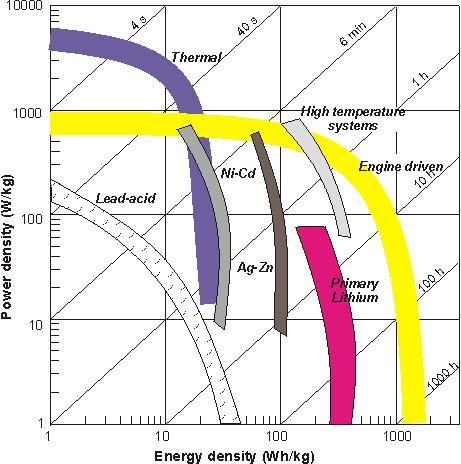
 |
For short discharge times and if weight is the critical factor, specific power can be more important than specific energy. This is the case in many aerospace and missile applications. A battery that can only be discharged relatively slowly will be inappropriate for a rapid discharge, of the order of a few minutes. The following figure compares the discharge performance of some reserve batteries with generator systems, for specific energy (SE) and specific power (SP). There are clearly large differences between achievable power densities. Thermal batteries can deliver up to 5 kW/kg of power, whilst silver-zinc can manage only 1 kW/kg and lithium about 0.1 kW/kg if cooling is used. Lead-acid batteries ed for this purpose can only achieve about 0.45 kW/kg.

Note that if the weight of fuel can be ignored, such as for a small generator driven off the main propulsion engine drive shaft in a missile, the theoretical SP of a generator is fixed (its power/weight ratio). In this case, the SE increases proportionately with the time of use, i.e. the longer it runs the more energy it produces. In practice, of course, all generators contribute extra drag, even ram air driven turbines, and the additional fuel to overcome this drag must be allowed for. In the case of generators driven by their own engines, the weight of the fuel and its container must be included in the reckoning, together with the SE of the fuel and the conversion efficiency of the combined engine/generator.